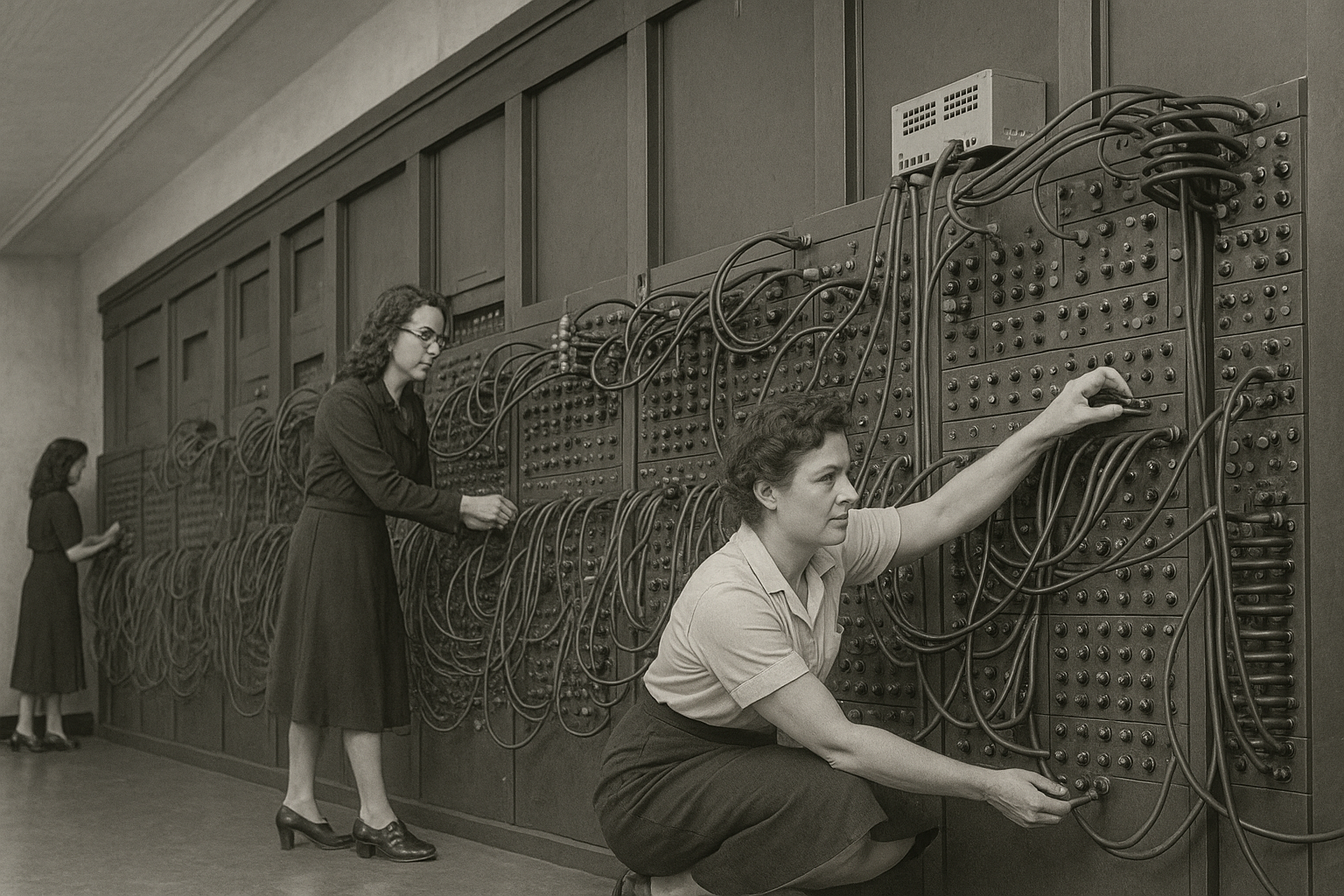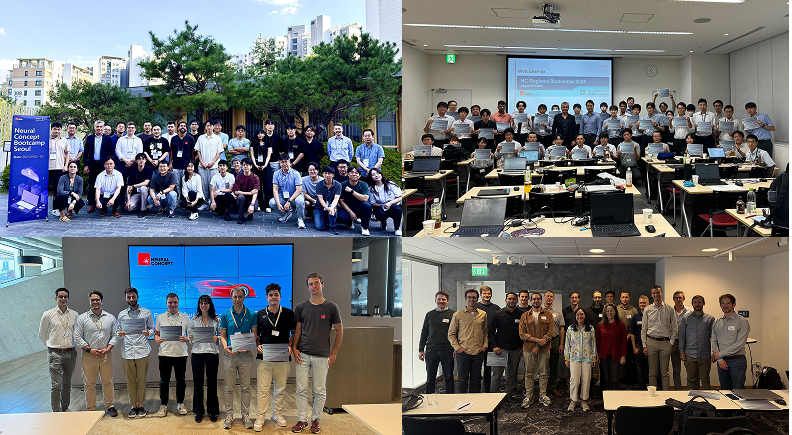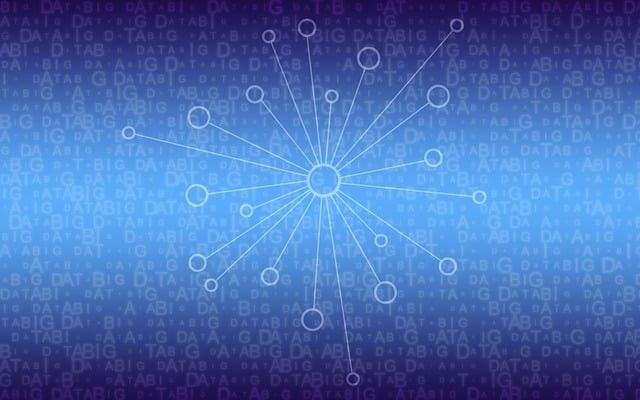Digital Thread vs Digital Twin: Key Differences and Practical Insights

A digital twin is a virtual counterpart, or digital representation, of a physical system. It is a dynamic simulation that mirrors real-time performance based on sensor data and predictive models in the twin. It answers the question: “What’s happening now, and what if?” to enhance system performance.
A digital thread connects every piece of data across the product’s lifecycle, ranging from initial design sketches to production logs and maintenance records. Rather than being a model, the digital thread creates a continuous, traceable flow of information that tells us: “what happened, when, and why”.
These two concepts—digital twin and digital thread—are central to digital transformation in manufacturing and engineering, playing key roles in monitoring, optimizing, and connecting data across the entire product lifecycle to enhance processes and innovation.
Both the digital thread and digital twin are digital representations, but they have different levels of implementation in industrial enterprises.
A digital twin, often referred to as a digital replica, is a simulation and analysis tool, while a digital thread is a complete framework for data management and connectivity. Discover here how Neural Concept unveiled real-time digital twins.
The following is a practical map outlining how we will explore digital threads and digital twins in the article, covering architecture, data quality, lifecycle, predictive use, compliance, and real‑world rollout.
- Digital Twin and Digital Thread
- Digital Twin
- Digital Thread
- Summary of Key Differences: Digital Thread Vs. Digital Twin
- Digital Transformation and Digital Threads
- Digital Twins: Models That Think and React
- Digital Threads: Chronological, Cross-Functional Data Traces
- Complementarity without Redundancy
- Architectural Roles in the Digital Transformation
- Data Management and Quality
- Product Lifecycle and Product Data
- Predictive Capabilities - Digital Engineering
- Predictive Context Beyond the Asset
- From Downtime Reduction to Competitive Edge
- Digital Twins in Practice
- Conclusion and Future Outlook of Digital Thread and Digital Twin
- Application to Product Recalls and Compliance
- Implementation and Best Practices
Digital Twin and Digital Thread
Digital Twin and Digital Thread are complementary. Together, they enable smarter design, predictive maintenance, and improved decision-making by facilitating collaboration between design, manufacturing, and maintenance teams, and offering detailed data-driven analyses of performance, reliability, and trends.
Digital Twin
- Focus: A digital twin is a software-based virtual representation of a specific physical entity, such as a turbine, a vehicle, or a factory floor. This virtual replica mirrors how that system behaves under different conditions.
- Purpose: The twin allows engineers to run virtual experiments, such as testing responses to stress, wear, or failure before implementing changes in the real system. This reduces risk, shortens development cycles, and improves productivity and quality.
- Data: These cyber-physical representations are based on real-time data capture from the physical world, often via IoT (Internet of Things) sensors. This input keeps the model synchronized with the physical object, enabling up-to-date simulations and diagnostics.
- Use Cases: Digital twins support condition monitoring and early fault detection, helping to optimize performance by analyzing real-time data and identifying areas for improvement. They’re also used to train machine learning models, test control algorithms, and fine-tune physical designs without halting operations.
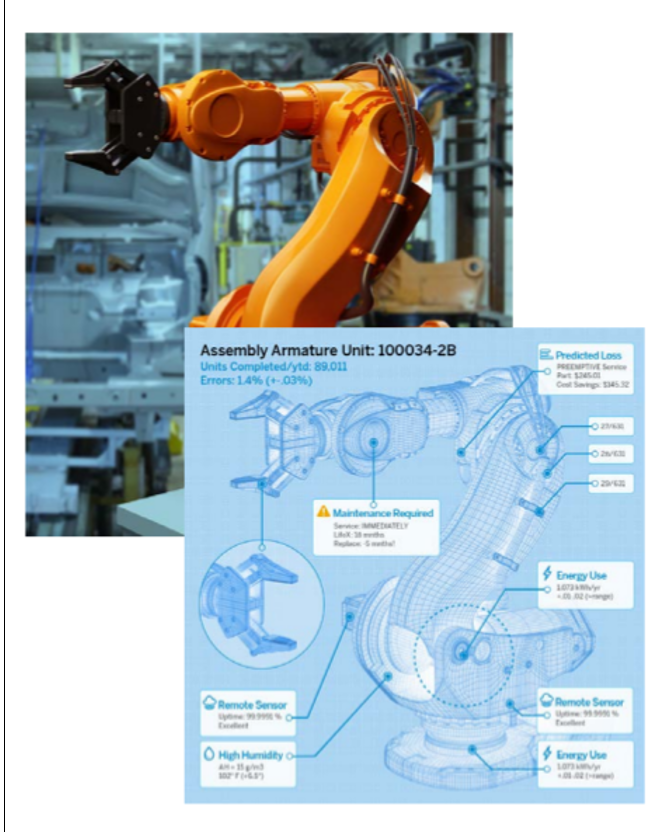
Digital Thread
- Focus: A digital thread is the structured path of data flow that follows a product throughout its entire lifecycle, from concept to design, manufacturing, usage, and end-of-life. The digital thread ensures data integrity, seamless data flow, and continuity, supporting compliance and traceability. It connects and supports the entire product lifecycle, enabling collaboration and continuous improvement at every stage.
- Purpose: It connects each decision, model, and update to its origin. This continuity improves collaboration across teams and ensures nothing gets lost across departments or over time.
- Data: Threads integrate diverse data sets, including engineering data such as design files, engineering specifications, testing logs, production metrics, and even field service reports. All steps are linked and timestamped.
- Use Cases: They’re vital for audits, root-cause analysis, and compliance documentation. Digital threads also simplify the reuse of designs, making it easier to scale or customize without starting from scratch.

Summary of Key Differences: Digital Thread Vs. Digital Twin
- Scope: Twins are tied to a single product, process, or machine, making them specific to a particular asset. Threads operate at a higher level, linking entire chains of data across systems and timeframes. Digital threads provide end-to-end tracking and data management throughout the product's lifecycle, from initial design and manufacturing to maintenance and disposal.
- Nature: A twin is a dynamic, interactive simulation that replicates the behavior of a physical system. In contrast, a thread is not a model, but a network of context, i.e., a system for organizing and relating data over time.
- Relationship: A twin may exist as a node within a broader digital thread. However, a thread can connect multiple twins, along with documents, simulations, and historical records that lack a real-time model.
Here’s a clear comparison table to make the differences stand out:
Digital Transformation and Digital Threads
The digital transformation focuses on integrating the digital thread and the virtual replica to optimize processes, performance, and enhance product lifecycle management. When integrated effectively, digital twins and digital threads create a feedback-rich environment that accelerates product development cycles by shortening iteration loops and minimizing rework.
The digital revolution in industry started with Industry 3.0 in the late 20th century, with computers and PLCs enabling automated production and relevant AI data collection. These isolated systems optimized local control.
Industry 4.0 emerged in the 2010s, driven by connectivity, sensors, and cloud tech, enabling a seamless flow between digital and physical worlds. Modern manufacturing systems employ digital threads and digital twins to provide real-time visibility into assets and workflows, improving performance and ensuring traceability.

What is a Digital Twin?
A "twin" is a digital model that mimics its physical counterpart by processing real-world signals such as temperature, vibration, or voltage. It can simulate wear and tear over time, predict failures, or test new control strategies without requiring the actual machine to be stopped.
The twin updates with the physical asset according to engineering specifications : changes in setup or environment are reflected instantly.
Taking an example from the aerospace industry: a virtual replica of an engine may utilize sensor data from each flight to enhance thermal stress predictions and inform future maintenance planning. Digital twins can also be used to represent and monitor an entire production line. This integration of real-time data and digital simulation improves simulation accuracy, enables predictive maintenance, and delivers full operational visibility across manufacturing processes.
What is the Digital Thread?
A digital thread is a connected data flow across the product lifecycle, capturing all related data from engineering and manufacturing. It helps engineers trace issues, compare results, and reuse validated knowledge. It enables scenario reconstruction and validation, essential in safety-critical fields like automotive and defense. Digital threads also support ongoing monitoring for real-time quality control and lifecycle management, ensuring early detection of quality issues and maintaining end-to-end traceability.
What are the Architectural Roles in the Digital Transformation?
Implementing digital twins and threads requires coordinating tools, data policies, and system architecture for smooth integration. Manufacturing execution systems (MES) such as Siemens Opcenter or Rockwell Automation FactoryTalk serve as the operational hub, collecting real-time production data and linking it to enterprise systems. Integrating an MES with digital threads and twins further enhances asset performance and operational efficiency by connecting real-time production data with enterprise asset management.
Digital twins, often embedded in simulation platforms like ANSYS Twin Builder or control systems such as Siemens MindSphere, provide live performance insights that help reduce downtime and optimize output. Digital threads record decisions and data throughout the lifecycle, enabling traceability, quality assurance, and compliance certification.
Data Management and Quality
Digital twins and digital threads rely on continuous, structured information flows. Without clear rules for how data is collected, stored, accessed, and interpreted, even the most advanced models will diverge from reality; therefore, data management is based on trust in every simulation, prediction, and decision the system makes.
- Digital threads track design changes over time
- A digital thread connects design revisions, test results, and field data in a sequential manner. For instance, if a turbine blade cracks after 500 flight hours, the thread allows tracing it back to a specific alloy batch, production setting, and even simulation assumption, without manual document searches.
- Structured data enables simulation re-use
- When results and models are stored with standardized metadata (e.g., material models, loads, boundary conditions, solver settings), relevant portions can be extracted and reused across different simulations.
- Twins require a raw and processed data history
- A cyber-physical replica is not a static snapshot; it reflects the evolution of a system. For a compressor in a chemical plant, the twin will ingest sensor logs, maintenance logs, recalibration events, and control overrides. In addition to the “latest values”, it will also consider their context and history to model wear, drift, and interventions.
- Clean data allows reliable anomaly detection
- Training anomaly detectors on incomplete or mislabeled datasets yields spurious alerts. In rotating equipment, for example, a mislabeled maintenance action (“lubrication” logged as “replacement”) can make a health trend appear unstable. Good labeling and validation matter more than flashy AI models.
- Shared vocabularies avoid mismatches across domains
- For instance, a sensor tagged as “Inlet_T” by one team and “T1” by another may confuse downstream systems, especially when federating data from suppliers. Thus, standardized naming conventions and units (e.g., ISO 15926 or OPC UA) can help software.
Product Lifecycle and Product Data
Product Lifecycle and Product Data are key to modern engineering. Lifecycle management tracks a product from design to end-of-life, while product data (including sensor and manufacturing information) enables traceability, real-time simulation, and decision-making. Digital threads and digital twins also help monitor and optimize the entire manufacturing process within a digital manufacturing ecosystem by utilizing relevant data .
What is Product Lifecycle and Why is it Important?
Product lifecycle management encompasses the entire lifecycle, from design to end, with digital threads serving as the backbone that weaves data into a seamless record, promoting continuous improvement. Computer-aided design tools integrate into the digital thread to support precise design and real-time data sharing. This integration links design changes directly to manufacturing and performance data, allowing engineers to simulate outcomes, detect potential faults early, and refine designs before production—reducing recalls and shortening time-to-market. You can get more details on how digital twins will transform manufacturing processes.
What is Product Data and How Does it Support Engineering Decisions?
- End-to-end data flows trace the product from design to disposal: For example, a digital thread links CAD models, material certificates, and assembly instructions with quality checks and maintenance records, enabling full traceability of every component.
- Product data drives real-time twins: Sensor data collected during operation updates the digital twin, enabling the simulation of wear and the prediction of failures before they occur, such as estimating remaining engine life based on vibration testing and analysis.
- Digital threads unify diverse datasets, connecting engineering specs, production batch records, and supplier certifications to reveal correlations, such as how supplier variability affects final product quality. This synchronization of data across the product value chain helps lower costs by reducing specification errors, improving coordination between design and production, and minimizing waste.
- Integrated product data supports root-cause analysis: When defects emerge, the connected data enables engineers to quickly identify whether issues originate from design, materials, or manufacturing steps, thereby speeding up corrective actions.
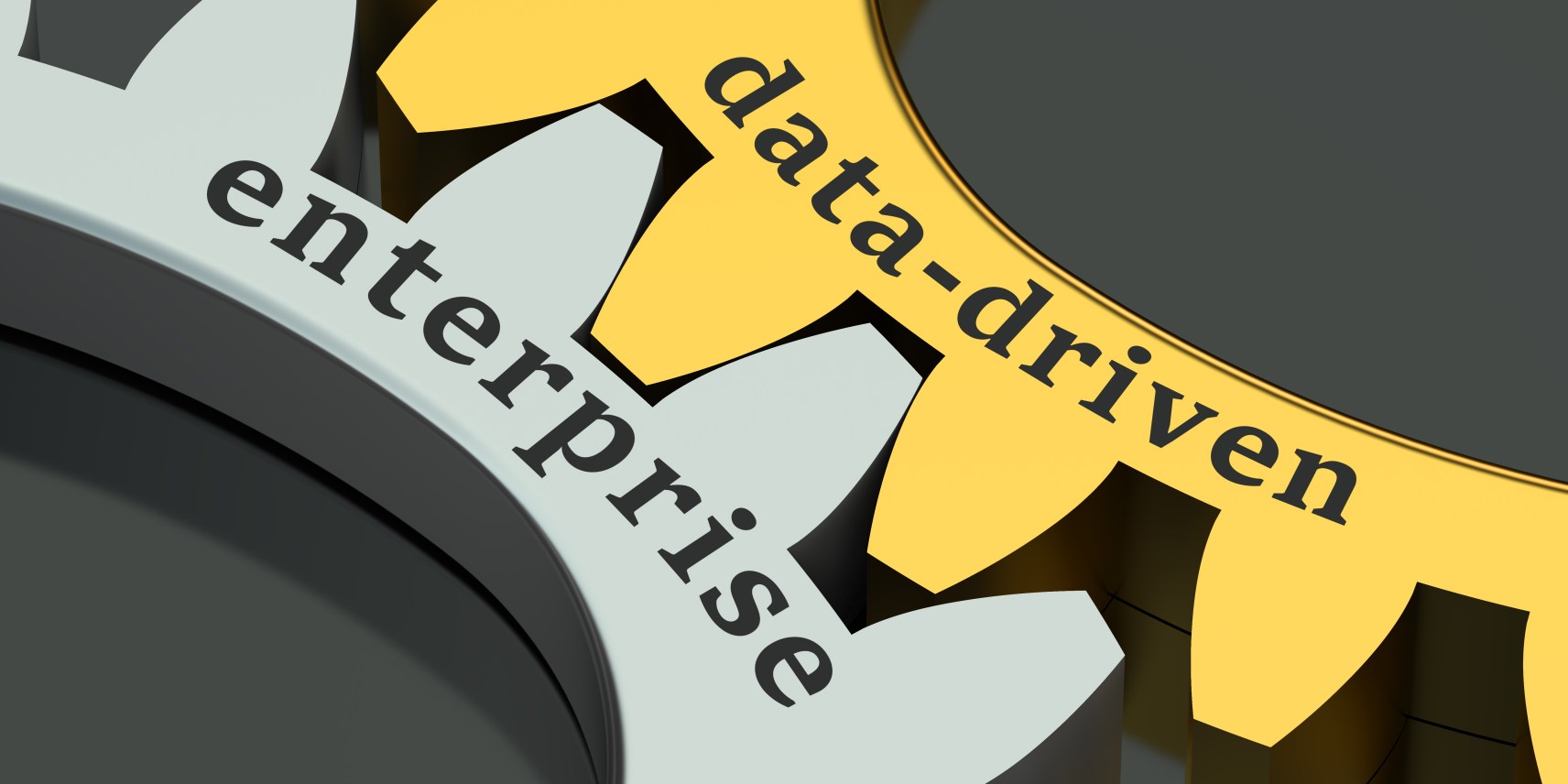
Digital Engineering and Predictive Capabilities
Organizations are transitioning from reactive to proactive operations, thanks to predictive capabilities that are also based on Artificial Intelligence. Discover here how Neural Concept is transforming Engineering Design With AI. Predictive capabilities in digital engineering have matured quickly. Performance data, digital thread technologies, manufacturing execution systems, and communication frameworks are now spanning the entire production process.
Organizations synthesize insights from multiple sources to enable informed decisions. AI-driven models, supported by 5G connectivity, ingest real-time data from machines, methods, and systems. Twins enable engineers to detect early signals. Thus, they can simulate outcomes and correct course before failures occur.
Predictive Context Beyond the Asset
While a twin focuses on a specific asset, the digital thread connects its history, interactions, and dependencies across the enterprise. This communication framework enables predictive logic to extend and drive business outcomes, aligning with design intent, quality records, MES, and supplier inputs.
Predictive analytics depends on structured, timely, and relevant data. Digital threads act as the circulatory system, feeding predictive engines with versioned models, test outcomes, process deviations, and sensor streams. AI algorithms running on edge devices forecast failure probabilities, detect early deviations, and rank maintenance priorities. This shifts planning from a calendar-based to a condition-based approach.
From Downtime Reduction to Competitive Edge
With the integration of predictive powers into both product and process layers, manufacturers gain agility. They can
- anticipate tool wear,
- reschedule jobs before bottlenecks emerge, and
- redesign underperforming components before market feedback forces them to do so.
Predictive digital engineering becomes a competitive differentiator, enabling faster iteration and smarter supply chain responses. The value lies in knowing what’s happening, but especially in foreseeing what will.
A digital thread connects design, manufacturing, and operations data. For example, when a CAD model changes, the update flows automatically to the shop floor and into maintenance logs. This connectivity reduces errors, shortens downtime, and helps plan maintenance before failures occur. Thus waste is cut and cost is reduced without compromising quality.
Digital Twins in Practice
Digital twins are virtual models of real systems, kept in sync through the exchange of data. When used correctly, they support simulation, testing, and monitoring across the product lifecycle. Below are practical examples of how engineers apply them.
- Used across sectors for asset performance: In aerospace, digital twins model turbine blades under thermal stress to optimize inspection intervals and improve reliability. In automotive, they simulate battery degradation across driving profiles. Discover here how Subaru introduced Neural Concept to revolutionize automotive development.
- Real-time feedback drives predictive maintenance: By continuously comparing predicted versus actual sensor information, twins flag anomalies—such as pressure drops in a pipeline—before failures occur.
- Depend on digital threads for accurate context: A twin of a robotic arm needs not just live sensor data, but also design tolerances, firmware versions, and past maintenance logs supplied by the thread.

Application to Product Recalls and Compliance
Recalls and audits require traceability, which is provided by digital threads and twins.
- Traceability advantage: Threads maintain a continuous record of the product’s lifecycle, enabling easy tracing of issues back to specific manufacturing conditions or suppliers.
- Real-time diagnostics: Twins can simulate the behavior of recalled units to predict failure patterns, enabling the prioritization of which units require urgent intervention.
- Documentation readiness: Both technologies automatically create logged records, simplifying compliance with regulations.
- Production cost reduction in recall scenarios: Accurately collected information helps avoid over-recalling unaffected units, saving time and financial resources.
Implementation and Best Practices of Digital Twins and Digital Threads
Digital twins and threads require careful system architecture, data management, and usability. Augmented reality enhances these by offering a visual lens for workers to access contextual info in industrial settings, boosting efficiency and decision-making.
How Should Digital Twins and Digital Threads be Implemented in Engineering Environments?
The following are core implementation steps for engineering environments:
- Embed digital threads in existing information flows: Digital threads rely on consistent identifiers across CAD, PLM, ERP, MES, and simulation systems. This requires syncing data models and ensuring traceability across lifecycle stages, from CAD files and BOMs to maintenance records and sensor logs. Interfacing tools must allow automated, bidirectional updates without manual reconciliation. Discover here more on CAD technology.
- Enforce consistency and standardization: Data quality is essential for both simulation fidelity and decision automation. Implement robust validation pipelines at all ingestion points. Utilize standardized formats and ontologies, such as ISO 10303 (STEP) or the OPC UA companion specifications, to prevent misalignment between systems.
- Align training with specific user roles: Implementation often fails when training is too generic. Engineering simulation specialists, operators, and analysts each require different types of interfaces.
- Include AR/VR as an interface layer: AR can help users visualize data from the digital twin in real-time, especially for maintenance and remote assistance. However, the AR interface must be tied to the same backend used by simulation and analytics systems. Prioritize consistent sources over flashy overlays!
- Monitor and adapt usage continuously; Implementation is not a one-off project. After deployment, monitor how users interact with the system: where they click, what they ignore, and what breaks. Use this feedback to refine interfaces, automate repetitive tasks, and minimize friction in your daily workflow!
What are the Best Practices for Using Digital Twins and Digital Threads?
Maximizing value from digital twins and threads requires disciplined management of data, processes, and feedback loops.
Key best practices include:
- Maintain data integrity and version control; benefit: avoid misalignment across systems.
- Ensure scalable architecture; benefit: support multiple twins and large datasets.
- Implement feedback loops. This will lead to continuous system improvement.
- Foster cross-functional collaboration. Have the engineering, operations, and IT teams collaborate!

Conclusion and Future Outlook of Digital Thread and Digital Twin
The digital thread and digital twin are valuable tools for organisations to optimize their manufacturing processes. Their value depends on how well they are integrated into existing engineering processes, the trustworthiness of the data, and how effectively they align with the actual operational needs of improved efficiency.
The concept of a thread as a continuous, queryable chain of product data can drastically improve traceability. This can, however, take place only if data from design, production, and field use is consistently structured and accessible. In fragmented IT environments, this is still an open challenge.
Digital twins can support in a virtual environment predictive maintenance, design iteration, and failure analysis, but only when the virtual model is grounded in high-fidelity data and kept in sync with the physical asset. Creating and maintaining these twins is expensive and requires domain expertise, especially when physical behavior (e.g., in thermomechanics or multi-physics systems) is nontrivial.
Looking forward, we can expect to see growing implementations of multiple digital twins in various industries, with aerospace, automotive, and medtech leading the way, as the cost of failure justifies the investment. Other sectors may benefit, but adoption will depend on ROI, and not on buzzwords.
FAQs
What industries benefit most from digital twins and digital threads?
Aerospace leads in traceability and simulation. Automotive, energy, and industrial sectors follow, especially where field feedback influences design. Medtech and infrastructure are catching up, driven by asset monitoring needs and strict regulations.
How do digital twins support innovation in product development?
Digital twins support innovation in product development by enabling rapid prototyping in a virtual environment, powered by diverse data sets.
How can digital twins provide improved customer insights?
Digital twins provide improved customer insights by incorporating real-time data about customer preferences and behaviors.
How do digital twins help reduce costs during product development?
Digital twins reduce costs by minimizing the need for expensive physical prototypes and enabling extensive testing.
Can threads connect with other enterprise systems?
Digital threads can connect to almost any other enterprise system, including digital twins.
How do the scalability limits of digital twins compare to digital threads?
Digital twins are scalable, but only to a point, while digital threads are limitlessly scalable.
Why is the data in a thread often more consistently accurate?
Data attached to a digital thread tends to be more consistently accurate due to automation features.
How do threads help enterprises maximize resources and reduce waste?
Digital threads provide valuable insights into materials, energy usage, and environmental impact, enabling enterprises to optimize resource utilization and minimize waste.
In what way do threads improve product quality?
Digital threads improve product quality by enhancing communication among designers, planners, and machinists, thus reinforcing the entire value chain.
How do digital threads and twins support compliance and audits?
They generate timestamped, versioned records that eliminate ambiguity. Instead of reconstructing what happened post-facto, auditors get a complete, living history, from design intent to production data to in-service performance. This reduces audit duration and prevents compliance gaps.
What are the cybersecurity concerns with digital twins and threads?
Twins often connect to live equipment, making them potential vectors for real-world disruption. Threads cross multiple systems (PLM, MES, ERP), creating lateral movement risk. You must secure APIs, enforce strict role-based access, and treat simulation results with the same level of protection as operational control systems.
How do twins and threads impact regulatory compliance?
They turn compliance from a reactive burden into a continuous, evidence-based process. A digital thread preserves the history of who changed what, when, and why. A true digital twin provides operational validation and supports model-based certification.

